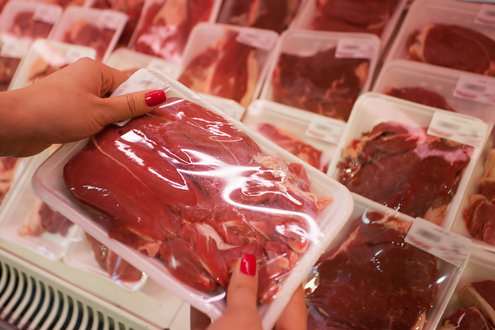The low Canadian dollar may be a key factor for the projected rise in food prices in 2017
By Jennifer Jackson
Farmers will see multiple market drivers in the new year. These market drivers will contribute to a predicted three to five per cent increase in food costs, according to researchers at Dalhousie University.
This inflation in prices is well above what is considered acceptable for Canada food prices, according to Canada’s Food Price Report 2017. The inflation would equate to an additional annual cost of $420 for the average family.
What is believed to be one of the largest drivers of the markets? Slyvain Charlebois, dean of the Faculty of Management and lead author on the study, believes it is the failing Canadian dollar.
“Given how many food products we import from abroad, our food economy is vulnerable to currency fluctuations,” said Charlebois in a Dec. 6 release.
For fluctuating food prices in 2016, “the strong link between the prices of commodities like oil and the value of the Canadian dollar, were the likely culprits as low oil prices drove down the value of the Canadian dollar. (This) further diminished Canadian purchasing power in foreign markets,” according to the report. “Despite a possible rise in oil prices, the Canadian dollar is likely to continue to drop in 2017 due to lower interest rates.”
The weak dollar will continue to affect commodity and retail prices.
Dairy and eggs, in addition to bakery and cereal products, are expected to inflate reasonably into the new year, at rates of zero to two per cent. This is because most of these foods are produced by Canadian farmers. Therefore, these foods will be less affected by the poor Canadian dollar exchange rate, according to the report.
In regard to bakery and cereal products, Michael Von Massow, assistant professor of the School of Hospitality, Food & Tourism, at the University of Guelph, notes the large amount of processing involved in these products.
When you factor in the processing chain, “the farmers’ share of the cost of a loaf of bread (for example), is approximately less than ten per cent,” he says. Minimal retail price changes occur when wheat prices fluctuate.
The forecasted inflation value of these bakery and cereal products “would not be reflecting any forecasted change in wheat prices,” says Von Massow.
In terms of meat, cattle futures are predicted to remain flat. Researchers expect, however, demand to increase and therefore to push retail price higher, according to the report.

Pilin_Petunyia/iStock/GettyImagesPlus
Retail meat prices in general are expected to inflate four to six per cent – a value that may be too high when referring to the current markets, says Von Massow.
“We’re seeing low cattle prices, low feed grain prices – (there are) no real suggestions that beef or pork prices will go up,” he says. “With the competitiveness amongst grocery stores, I do not think farmers (or consumers) will see much rise in price.”
Would livestock producers need to worry about decreased consumer demand, should the retail prices for meat increase four to six per cent?
“Evidence shows that unless we have a very significant price increase, the impact on demand (for meat) is relatively small,” Von Massow says. “Consumers may choose different cuts” rather than switch protein source altogether.
Although the report predicts vegetable prices will inflate four to six per cent, this prediction does not necessarily represent trends throughout the full year, according to Von Massow.
“The price is more likely to be more than (this value) in winter – Canada’s off-season – and less in our production season,” he says. “We could see benefits of local, flash-frozen, and (greenhouse) grown Canadian vegetables, as the imported products increase in price.”
While only time will tell how food prices will appear on grocery store shelves, Charlebois reflects on the study itself.
“The report is not just about price: it’s about the future of food. It’s about the quality of the food we eat, it’s about food cultures; it’s a multidimensional report around food,” he said in the release. “Food pricing affects all Canadians.”
Click here to see more...